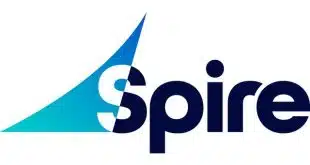Whether they like it or not, billers are accepting more credit and signature-based debit card transactions on their Web sites?at the expense of the share of less costly bill payments cleared through the automated clearing house. So-called biller-direct sites?Web sites set up by financial institutions, utility companies, telecommunications carriers and others that allow consumers to pay their bills?will see the share of transactions coming from credit and debit cards jump to 16.5% in 2005 from 14.3% last year, an increase of 15%. Meanwhile, ACH transactions will decline from 85% of payments to 82%. And increasing card acceptance by biller-direct sites is putting pressure on online-banking sites, few if any of which currently accept cards, to begin taking them. These are among the findings of a survey of 21 billers accounting for 9% of all consumer bill payments conducted this summer by New York-based research firm Aite Group LLC. Billers pay discount fees for card transactions that far exceed their costs of accepting ACH-based electronic checks, but they are increasingly bowing to consumer pressure to accept cards, says Gwenn Bezard, research director at Aite and author of a recently released study based on the survey results. Consumers, he tells Digital Transactions News, are responding to rewards and other incentives offered by card issuers. Some, he adds, may be cash-contrained and like the ability to use credit to help ends meet at the end of the month. Competitive pressure plays a role, too, as more billers offer card acceptance. “Billers don't like it when consumers pay with a credit card, but they don't want to lose customers to competitors if the competitors accept cards,” he says. For the market overall, Aite data show credit and signature-debit transactions for Internet bill payment growing 49% this year, to 257 million payments from 173 million in 2004. ACH-based payments, Aite estimates, will go up by a like percentage to 1.5 billion in 2005. The pressure to allow card payments is leading to increases in the so-far modest share of bill payments on ATM cards in a process known as PIN-less debit. These payments will increase from 0.8% of Web bill payments in 2004 to 1.1% this year, the survey indicates, as billers respond to the lower interchange pricing such transactions carry. With PIN-less debit, consumers pay their bills online by entering a PIN debit card account number but not the PIN. The method has so far been limited by the electronic funds transfer networks to certain biller categories, such as utilities, government agencies, and loan payments, where the risk of fraud is deemed to be very low. So-called consolidator sites?primarily online-banking sites offering consumers bill-payment capability to a variety of billers?will now face increasing pressure to allow credit and debit cards for bill payments, the Aite report concludes, to avoid losing payments to biller-direct sites. “It's creating a long-term challenge [for these sites],” says Bezard. “Someone has to pay for making changes to the infrastructure [to permit card payments], but banks will have to recognize that.” Already, at least one merchant processor?Dallas-based TransFirst LLC–is seeking to buy a bill-payment processor with the idea of allowing consumers to make card-based bill payments on bank sites (Digital Transactions News, Oct. 28). Few if any bank sites allow card-based payment today, primarily because the electronic pipelines put in place to facilitate payments rely instead on proprietary connections established by third-party processors or on the ACH. “The infrastructure set up for consolidator bill payments was not set up for credit and debit card payments,” says Bezard. Competitiveness plays a role as well, as most banks are loath to permit payments on cards issued by competing banks, he says.
Check Also
Fiserv’s Clover Goes Down Under and other Digital Transactions News briefs from 3/31/25
Fiserv Inc. has introduced its Clover point-of-sale technology in Australia. The system is now available in …



